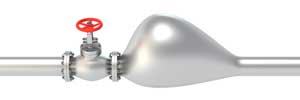

Dr. Peter Rowe has been treating and studying young people with Chronic Fatigue Syndrome for over twenty years. Dr. Rowe was one of the first to validate the problem of orthostatic intolerance in ME/CFS.
His recent publication on impaired ‘neurodynamics’ in Chronic Fatigue Syndrome (ME/CFS) followed a decade of observing movement problems in his adolescent ME/CFS cohort at Johns Hopkins. The exercise problems in ME/CFS have been documented, but this is the first time someone has documented problems in an even more basic process – movement.
Dr. Rowe’s work documenting these previously unknown problem in the nerve/muscle interface in ME/CFS opens up a new arena of research in this complex condition.
- Check out our review of his work. ‘Strained’ – Are Neuromuscular Problems Causing Chronic Fatigue Syndrome?
Dr. Rowe addressed why movement might be impaired in ME/CFS and what could be done about in the interview below.
Cause
The study suggested that healthy people can have restricted ranges of motion and exceed them without symptoms, but when adolescents with Chronic Fatigue Syndrome exceed their ROM’s they feel pain and other symptoms. Why would that be?

Translating medicine into research. Close observation of his patients has clearly played an important role in Rowe’s research
Great question. Healthy individuals have to adapt to areas of mechanical dysfunction in daily life, such as after a fall or an ankle sprain. We usually do so with localized symptoms, and don’t typically develop overwhelming fatigue and other ME/CFS symptoms.
Beyond a certain threshold of injury or biomechanical strain, additional stressors—such as from infectious mononucleosis or other illness—might create further adverse neural tension. This can have negative consequences, including increased noxious input to the nervous system.
In a sensitized nervous system, further neuromuscular strain would be expected to lead to greater physiological consequences, including altered pain signaling, fatigue, and autonomic nervous system changes.
Could connective tissue problems be affecting nerve elongation in Chronic Fatigue Syndrome (ME/CFS)?
We think these issues are related. One possible explanation for the apparent paradox of joint hypermobility and connective tissue laxity on the one hand, and the adverse neural strain on the other, is that some of the positions of the spine in those with ligamentous laxity (slumped chest, head-forward posture, exaggerated lumbar lordosis) impose a length demand on the spinal canal and its contents.

The combination of joint laxity and connective tisuse tension seems paradoxical, but there may be a reason for it.
This in turn increases the load on the peripheral nerves, making them less able to elongate, more likely to be associated with reflex muscle guarding, and therefore more likely to sensitize the nervous system to further stresses.
In those with tightness and reduced mobility of the connective tissues, nerve elongation is likely to be more directly impaired.
You mentioned that the upper body in particular is often affected by these neurodynamic problems in ME/CFS. From my sternum upwards it feels rigid and kind of frozen. I have no doubt that this area of tension and rigidity makes it difficult for me to take deep relaxing breaths. Do you have any idea why this area in particular is so often effected?
We have documented the occurrence of these patterns of restricted movement, but do not know as much about how the problems might have developed. There are likely to be many reasons, and they will differ from one person to the next.
Some have developed less adaptive postures or patterns of muscle use following prior injuries, some have relatively mild scoliosis in the spine that affects the freedom of chest wall movement, and others have laxity in the ligaments.
We think it is also possible that some adverse neural tension (or neurodynamic dysfunction as some prefer to call it) could result from nerve swelling and changes that are due to an infectious illness, much as can be seen with some viral infections.
Do you believe there’s a relationship between these issues and the high degree of POTS found in your patients?
We do not have formal data that address this question. Rick Violand is the physical therapist whose ideas and understandings are behind all of this work; I don’t pretend that the observations are mine alone. He and I have worked together to try to better understand these observations for a little over a decade.

The fact that improving his patients orthostatic symptoms with drugs leads to reduced neuromuscular problems and vice versa suggests these symptoms are somehow interconnected
In the treatment of individual patients, as he is able to address the movement restrictions more effectively, the patients seem to report fewer orthostatic intolerance symptoms, making it easier for me to select the right medication for their orthostatic intolerance and other symptoms.
Conversely, as I am able to modulate the autonomic dysfunction and improve lightheadedness and other symptoms with medications directed at POTS or neurally mediated hypotension, Rick and his PT colleagues are able to treat people more effectively, often because the tissues are less irritable.
We speculate that there is an interaction between the autonomic nervous system and the movement restrictions, as has been observed in other physical therapy research on adverse neural tension and the sympathetic nervous system.
Precisely how they interact isn’t clear yet. Consistent with this thinking, and offering a more direct proof of concept, there will be a paper published soon by Dr. Michael Goodkin and Dr. Lawrence Bellew describing improvement in POTS symptoms after osteopathic manual therapy of their physical/somatic dysfunctions.
We obviously need to do a lot more work to understand the interaction between autonomic problems and the movement restrictions, but treating the problems that are objectively present on examination may provide an important bridge for people to tolerate exercise without exacerbations in symptoms.
Treatment
How helpful can the bodywork you do be in increasing a person’s functionality? Can it, for instance, help them to engage in exercise again and, if so, how much?
In the clinical care of those with ME/CFS, we have observed that the manual forms of physical therapy have been quite helpful for improving overall function, especially when people had not done well with exercise-based therapies alone. The exercise ended up being “too much, too soon.”
After the areas of restricted movement have been treated, people find that they can tolerate gradual increases in exercise without as much post-exertional worsening of symptoms. This then allows them to obtain some of the expected benefits of regular exercise.
Because we are also treating them with medication, or correcting other health problems like allergies, it is not always easy to separate the independent effect of the manual therapy, but it appears to have an important role for some people.
Once a patient’s range of motion is increased using your bodywork techniques does it tend to stay increased or will they need to return for more therapy?
In general, the improvements tend to persist, although some people need to return for “tune-ups” to address new injuries or strains that accumulate in daily life. For those with joint hypermobility and Ehlers-Danlos syndrome, there is a greater tendency for neuromuscular strains to recur. As a result, those who are more flexible often need more regular treatments.
You note that simply by easing the tension at certain nerves you can often relieve symptoms. Is it possible to determine the nerves that are problematic and do this at home? Would massage tools help?
Patients can be taught methods by their therapists for self-treatment at home. A variety of manual techniques can be used to accomplish similar goals, including tools used to treat myofascial trigger points.
If done correctly yoga involves breathing in a relaxed manner and then stretching while you’re in that relaxed state. Is that something that might work to free up this nerve/muscle problem in ME/CFS?
A variety of forms of exercise might be effective in just this way. Yoga, Tai Chi, and other similar practices could be effective in part because they lead to improvement in neural tension and muscle tightness.
If someone is interested in pursuing this further do you have recommendations for the kind of practitioners they should look for that are able to identify these areas and treat them?
Physical therapists who are trained in manual techniques, osteopaths who perform mostly manual therapy, and others should be able to address the abnormalities we describe. The goals of manual therapy are to minimize the influences of these areas of movement restriction and to actually restore normal physiologic movement and behaviors.
Of the gentle manual treatment techniques we have found to be most helpful in moderating the symptoms are combinations of neural mobilization, positional release, myofascial release, and cranial work. Practitioners who are trained and skilled in these techniques should be able to help many of those with these examination abnormalities.
Others
Limited range of motion and tender muscles are also found in myofascial pain syndrome. Is there any connection?
Many of the problems we describe are associated with myofascial restrictions, and treating these is likely to be important for improved function.
Have you examined adults with ME/CFS or people with fibromyalgia.? Would you expect people with FM to have more problems with range of motion given their common myofascial and other problems?
The adults we have treated with ME/CFS seem to have similar restrictions, although we have not examined the prevalence formally in a study. It would be reasonable to hypothesize that adults with ME/CFS (or those with FM) would have more areas of restricted movement because of the accumulated load of prior injuries.
Have you ever tested someone with ME/CFS at rest and then asked them to engage in strenuous exercise and then tested them again?

Don’t’ trust the picture. Dr. Rowe has pioneered research into orthostatic intolerance and now believes the muscle/nerve interface is mucked up. Recently he was proposing ME/CFS patients be tested for hidden dairy allergies…
No, but this would be an interesting study. Another worthwhile study would be to determine whether the gene changes observed after exercise in ME/CFS (by Light and colleagues) also occur after neuromuscular strain maneuvers.
The Future
In an email Dr. Rowe addressed why these problems deserve more study….
Because….
(a) the examination is not “normal” in CFS, as used to be claimed; the movement restrictions show that it is abnormal in yet another way,
(b) the findings of abnormal neurodynamics may help bring attention from neurophysiologists and others who have not been in the center of the discussions about ME/CFS, and
(c) the findings may help physicians better recognize the problems on examination, and then refer people for more effective treatments. We just have to understand the overall illness better.
Do you have any other studies planned or ongoing in this area?
We are preparing a manuscript on how areas of restricted range of motion change over time and as function improves in adolescents with ME/CFS. We are also completing the analysis of a study funded by the CFIDS Association of America in which we exposed adolescents and adults to a sustained neuromuscular strain and measured whether this was capable of increasing symptoms. This was a study designed to test our hypothesis that neuromuscular strain is a contributor to symptoms and central sensitivity in ME/CFS.
An obvious extension of this work would be to perform a randomized trial of manual therapy for CFS, but treatment studies are expensive, especially in light of the relative underfunding of ME/CFS research at the national level.










Interesting article. Looking forward to the one on trigger point and myofascial therapy!
It’s wonderful doctor Rowe took the time to have this discussion. In the first blog, I found his warning about the direct stretching of muscles to be very valuable. I seem to always get into trouble when I overstretch my muscle which results in increased myofascial pain.
During the over 20 years I have had my symptoms, I have had hundreds of hours physical therapy like Dr Rowe describes and have had no change in symptoms. I do have increased range of motion and more flexibility etc., but the pain, postexertional malaise, etc. Have just just stayed the same or gotten worse (as haa the autonomic dysfunction also). However, it has provided Pallative relief, which can be a godsend.
Cort, Thanks for your work. I once a again gave a pittance via your donate button. Maybe a lot of pittances will add up to something.
Thanks Tim. It looks like there’s more involved with you. In fact my guess is that there’s more involved with everybody but it’s another piece of the puzzle illuminated – and that’s a good thing.
Thanks for your pittance – we love pittances – if 5% of the 3,000 people that read that blog gave a pittance ($5) we’d be knocking it out of the park. If 1% gave a pittance we’d be doing really well. It’s the 1/30th of one percent donation rate (outside of our recurring donators)that creates difficulties.
How long should I be on the methylation treatment protocol before I begin to notice correction of some of the symptoms of CFS?
Tim,
Your comment regarding the “direct stretching of muscles” certainly rings true with me. A number of years ago, a chiropractor who practiced “active release therapy” became extremely frustrated (to the point of screaming at me) when my body didn’t respond the way he expected it would. Instead of experiencing release, my muscles became increasingly tense with each treatment.
Over many years, I’ve tried three other types of chiropractic with varying results. The traditional “bone adjusting” type did absolutely nothing for me. Upper cervical adjustments offered by NUCCA chiropractors were “hit and miss”. They sometimes relieved my extreme headaches, at least for a short period of time; sometimes made them worse; and sometimes had no effect. This is a very subtle treatment – the success of any given adjustment seemed influenced by the “state of mind” of the practitioner (and perhaps the patient as well) on a given day. In my location where there were few chiropractors trained in NUCCA, they really knew how to charge (ultimately $75 for an appointment that often took less than 5 minutes). I couldn’t justify the cost of continued treatment.
By far the most success I experienced with “bodywork” involved a chiropractor trained in the Pettibon system. This, too, is rather uncommon (I believe). I don’t know how much of my success was based on the gentle range-of –motion exercises guided by the practitioner, and how much on the at-home exercises. My “homework” involved the use of several props (described on the Pettibon website) as follows: a cervical traction device, cervical lordosis posture strap, cervical dorsal fulcrum, lumbo dorsal fulcrum, and headweight harness with weights. Interestingly, the postural issues these items were meant to address are exactly those described in Cort’s articles about Doctor Rowe. While under the care of this chiropractor, I regained significant range of motion in my neck, and developed a more upright posture. I also lost my chronic headaches.
However, these benefits did not translate into improved endurance for physical and cognitive activity. I still experienced a severe “crash” as a result of attempting to sing recreationally for two hours a week (a replacement choir director one evening had us sing standing up as opposed to seated). Further, following the advice of a sleep specialist (in an attempt to recover from my crash) put me further in the “pit”, with my first awareness of POTS. So, I can’t say if the Pettibon exercises were helpful in this respect. The death of my dear mother soon afterwards was the final “straw”. So, it seems addressing the muscle issues didn’t protect me from developing significantly worsened (and returned) symptoms and limitations.
On a positive note, however; despite not having been able to do the Pettibon exercises more than occasionally during the past 2 ½ years, I have retained the improved range of motion in my neck gained by using the fulcrums. I find this remarkable, and consistent with one of Doctor Rowe’s findings. So, perhaps this type of bodywork would help others with ME and FM.
You know, when I’m in an environment with less mold toxin in the outside air, my POTS gets better immediately. I wonder if it is related to this theory somehow.
Oh sorry, CFS brain struck. I was thinking of OI. I’m not sure if I have POTS or not.
I find biokinetic exercise very good
Dr. Rowe is the most amazing doctor and totally committed in trying to understand CFS. My daughter went from being bedridden to now living without pain and plans on attending college this fall. She was a patient of Dr. Rowe’s and part of this study. It took a year and a half of physical therapy and a very slow increase of exercise. Her POTS symptoms have decreased, but she still struggles with fatigue and has to balance her life. So it’s not a cure, but it sure feels like one after the bedridden years. Thank you Cort for writing about this important key to helping people improve their lives.
Sometimes slow but sure works! Glad to hear it Michelle. It must be great for her to participate in her life again. Good luck to your daughter on her continued recovery. 🙂
It’s so nice to hear success stories like your daughter’s Michelle! Would you be willing to share what her physical therapy and other recovery routines were specifically? I’d be so interested to know because I’ve never come across a thorough description of a full plan to address POTS…just bits and pieces. There seems to be a shortage of information in that area, or perhaps I’ve just missed it in my searches. In any case, Bravo to your daughter. It’s a big deal to get well (even almost all the way well) from these terribly stubborn conditions. Martha.
Hi Martha,
Yes, it has been a great relief to see my daughter improve. Dr. Rowe spoke with the PT therapist about rerouting the nerves and then focusing on her muscles surrounding the joints. Christina had been on a low dose of beta blocker (10mg of Nadodol) prescribed by her cardiologist for POTS. She then began the PT therapy. Christina was bedridden and had only a few hours a week of brain ability to work on school. It took a lot of hard work on her part to get better. She started with 2 minutes of exercise on her recumbent bike, gradually working up to an hour a day after a year. Without the beta blocker and PT therapy, this would not have been possible. She had been very sick, not talking, walking or reading at times for five years prior to Dr. Rowe.
After two years we moved to Georgia, where we found that Christina responds to warm winters. She still has to keep up with PT therapy and takes Ritalin for energy. She struggles daily with energy, she has to watch what she eats and works on stress management. Like being middle aged at the age of 18! Michelle
From two minutes to an hour on the recumbent bike is an amazing improvement – and to go from not walking or talking etc. to being able to participate in life again through the use of BB, physical therapy and slowly increasing exercise on the recumbent bike is astonishing.
It reminds me of Dan Moricoli who went from an invalid to working again through pacing, yoga, diet, blood enhancers, very careful exercise and probably a few other things. What surprised me about Dan is that there were no heavy drugs or anything like that involved…it was all this kind of ‘lightweight’ stuff.
Obviously nobody has gotten at the core of the illness given that she’s not healthy yet, but they appear to compensating for it with the treatments.
Hello Michelle,
Great to hear your daughter has back at least a partial life! I am also in Ga, have you found an effective physician that you would recommend? Especially one familiar w/ these techniques?
This is really great info. I so appreciate Dr. Rowe’s work. I would love a pamphlet outlining the manual PT techniques that he uses to share with my doc/PT.
I second that!